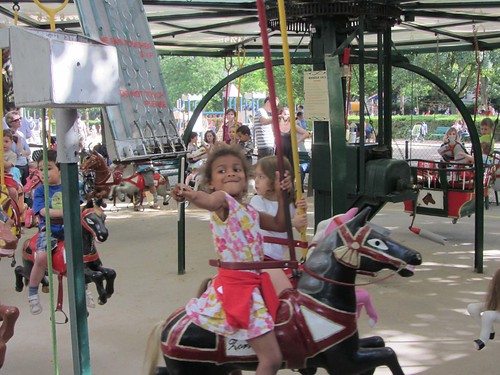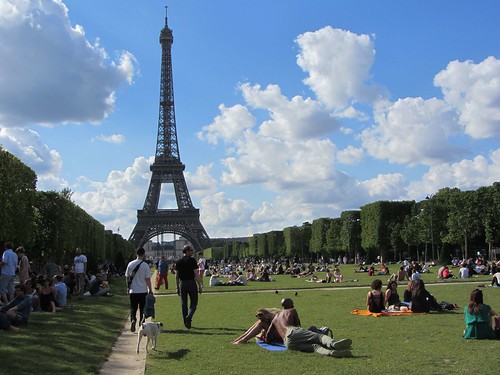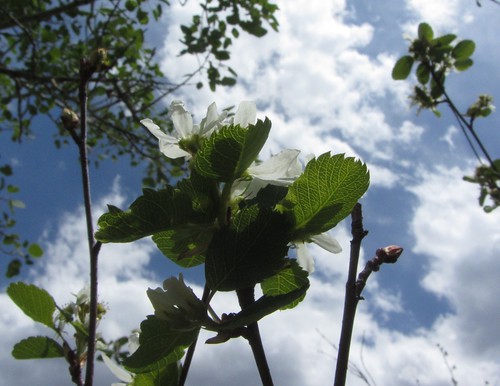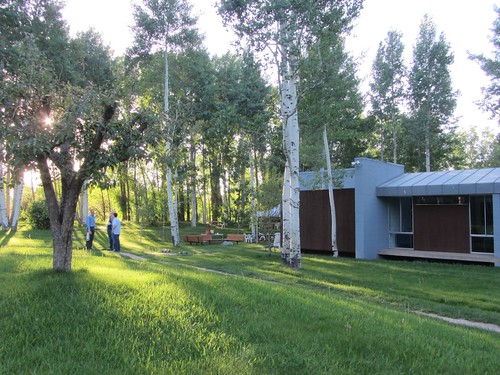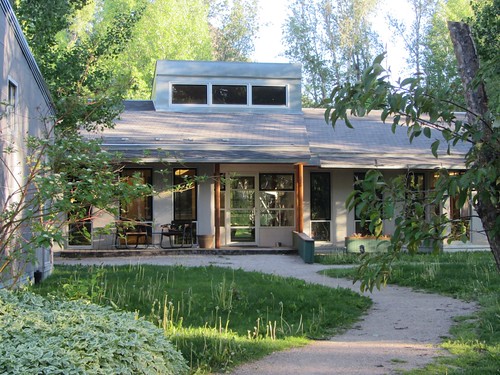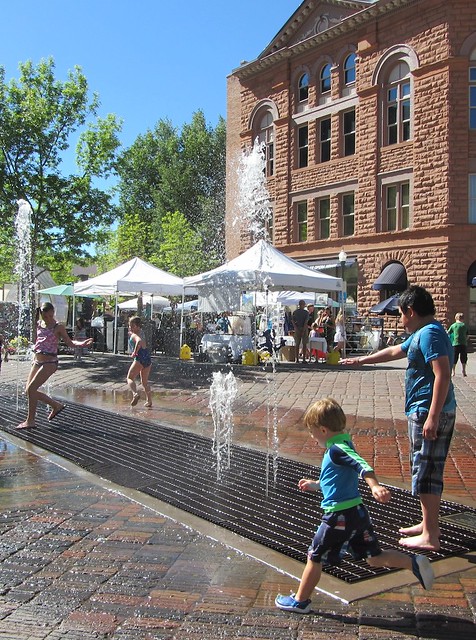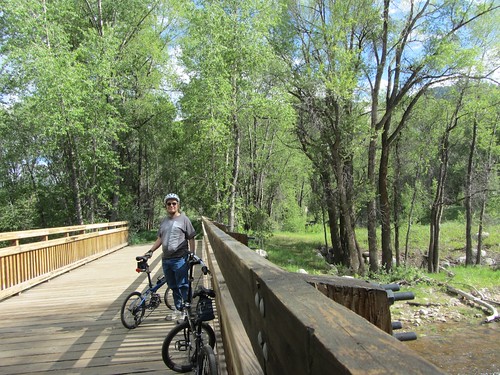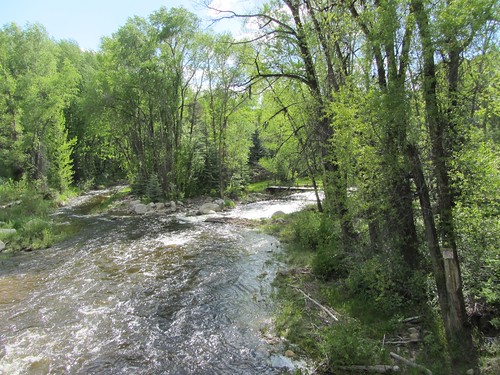 |
| On the Manege (merry-go-round) in the Champs du Mars that's been there for 100 years. Going for the Brass Ring has a literal meaning here. |
Sunday, June 30, 2013
Going for the Brass Ring
Saturday, June 29, 2013
Gay Pride March, Boulevard Saint Michel
 |
| Ready for the Gay Pride Parade? |
As we turned into Boulevard Saint Michel, we saw dozens of police cars and vans, and then heard and saw the beginning of the march. We watched it for quite a while, but I think it lasted all afternoon. We went on to a fabulous Chagall exhibit at the Musee de Luxembourg, and it was just finishing when we left the museum at around 5 PM.
 |
| Marchers near the beginning of the demonstration |
 |
| Marchers were organized into groups according to organizations they belong to. Many were special LGBT groups, others in leftist organizations. |
 |
| Police with riot shields were on the sidewalk, just in case any anti-gay attackers showed up. |
Friday, June 28, 2013
Paris
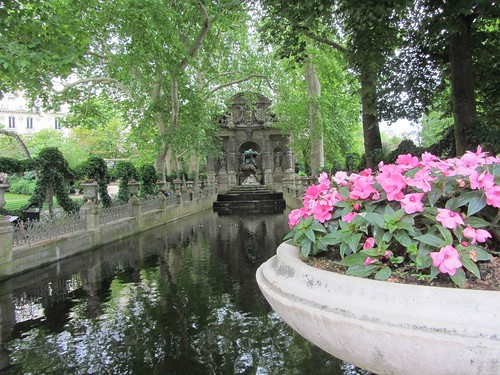 |
| A favorite fountain in the Luxembourg Gardens |

... on through parts of the Latin Quarter and to Notre Dame, though we didn't wait in the endless line to go inside.
 |
| The line to get into Notre Dame can be seen to the right -- but it went up a stairway and all the way around a viewing platform from which I took the photo. |
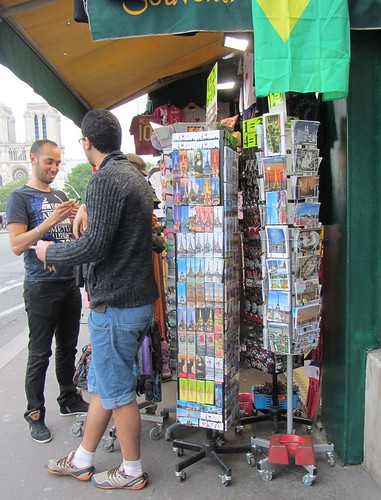 |
| Near Notre Dame there are as many souvenir shops as I ever remember. |
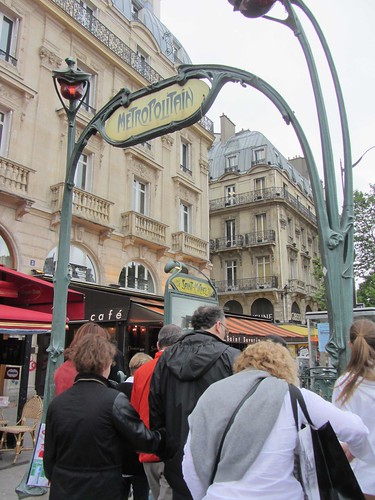 |
| Of course we have already taken the metro twice. |
Thursday, June 27, 2013
Was Heine right?
 |
| Gottingen: Statue of Georg Christoph Lichtenberg (1742-1799) |
"The town of Gottingen, famous for its sausages and university, belongs to the King of Hanover, and contains 999 hearths, sundry churches, a lying-in hospital, an observatory, a lock-up, a library, and a beer-cellar where the beer is very good.... The town itself is beautiful, and looks its best when you turn your back on it."I completely agree with Heine about the beer, and I've also had some quite good meals during my few days here. I've seen the sundry churches too, and the railroad station (which has pay toilets), which I imagine post-dates Heine's stay.
Heine divides the inhabitants into "students, professors, philistines, and cattle; which four classes are by no means sharply distinct." So far, I have met a few professors, who are very welcoming (Len's interaction with them has been fantastic). I can't say anything about cattle or about Heine's other generalization about the "narrow, desiccated, pedantic pride of the erudite Georgia Augusta University."
Heine's remarks all seem to apply to the study and importance of literature, language, and law at Gottingen, not to science, which he seems not to have acknowledged at all. And science does still seem to dominate the environment, as it did in the pre-Nazi era. Many famous 20th century scientists and mathematicians worked here before the Nazi's destructive policies as well as after the war when the Max Planck Institute revitalized scientific activity here.
Outside of science, I really wonder what is actually valued here. The tourist bureau's guide to important cultural sites of Gottingen lists two museums: an art collection housed in the faculty of law, and an ethnology collection, including some very interesting material from the voyages of Captain Cook, brought back by Georg Forster. Searching the web for Gottingen historical material, I also discovered that the art museum's collections include some Jewish ritual objects that were confiscated by the Nazis: and that the heirs of the original Jewish owners are trying to get them back. (See this article: "Family trying to recover extensive Hahn Judaica collection")
I attempted to see these collections, but discovered that (despite what the guide says) they are open only on Sunday. So I guess Heine's assessment of the philistines of Gottingen still applies. Science is strong. Life is short and art is long. But art is rather short in Gottingen, at least for the moment.
That said, our friends tell me that the university would like to create a central museum for the excellent materials that are scattered in various collections, such as one of the only 4 original Gutenberg Bibles in the world (owned by the university library; the others are outside of Germany) and the Cook/Forster collections. Even on Sunday when the museums are open, these collections may not be on view.
Also, I took a beautiful walk along the Leine River which meets the canal not far from the guesthouse where we are staying. If the weather had been better, I would have taken more walks out into the quite accessible countryside.
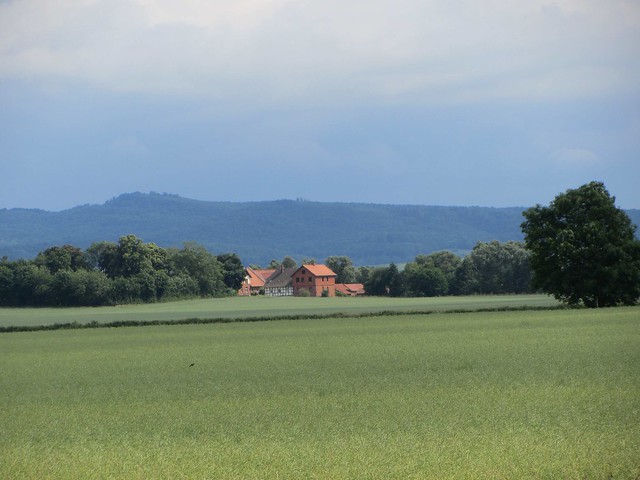 |
| View from the end of my walk |
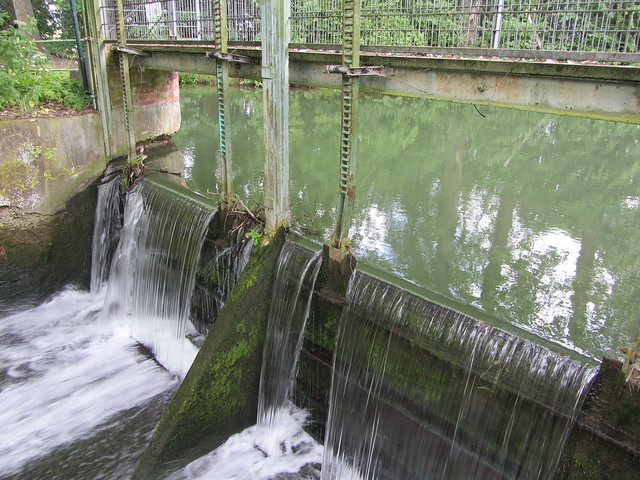 |
| One of several waterworks on the Leine which control the flow of the river and produce the town's water supply |
Wednesday, June 26, 2013
The Göttingen Synagogue Monument
 |
| Göttingen: monument on the site of the destroyed synagogue |
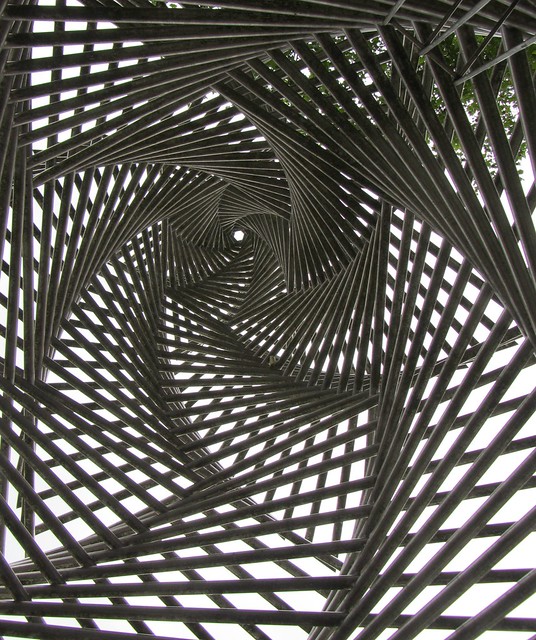 |
| Looking upward into the monument |
I thought about the families who once lived in the neighborhood. A knock at the door, the news that a you must leave. And perhaps for a very small number of them, a return 8 years afterwards to find one's apartment, occupied by people who said, "I heard you were dead."
I didn't want to think about it that way. Göttingen now is a very pleasant and welcoming town -- though there's not a lot to do and see here if you aren't a researcher. The quality and quantity of research at the Max Planck Institute is outstanding; Germany today is a completely different place, a completely different people.
I felt very sad to see how seemingly the synagogue and its monument were so thoroughly forgotten, or at least ignored. A dried-up wreath lay under the main inscription about the community. I went to a flower shop and bought a tiny bouquet to place in the wreath.
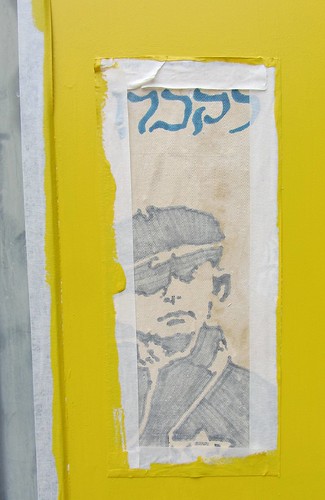

Two graffitti not far from the monument suggest that someone is aware of the past, but I have no idea who posted them, and only know that the words in German on the graffiti about not forgiving or forgetting are used in a song with a strong political context. The song appears to have a complicated cultural meaning that I can't understand and might feel even worse if I did. I'm totally over my head in this. Everything I can see about the song is in German. I can't tell if the song is far to the left or far to the right, but I'm pretty sure it's extreme. I also can't read what's written in Hebrew in the other graffiti.
UPDATE: The context of the song is that it's from the anti-fascist left wing politicos in Germany. Our friends who explained it say that a right-wing graffiti in Gottingen would be removed quickly.
Monday, June 17, 2013
Adaptation
In a rest stop in Nebraska or Iowa on the way from Aspen to Ann Arbor, I saw an example of a really well-adapted little bird. It was standing on the bumper of a truck or SUV and picking the freshly killed insects of the grille. Mmmm... fresh meat! Unfortunately it flew away before I could get a photo.
Sunday, June 16, 2013
Welcome to Michigan
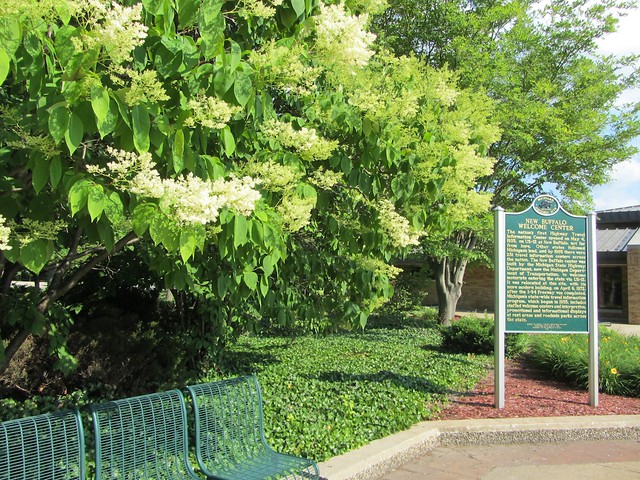 |
| New Buffalo, MI, Welcome Center just after the Indiana-Michigan state line |

Blossoming trees at the welcome center appeared to be at their peak. So Michigan looks beautiful to us.
Thursday, June 13, 2013
Flowers in the Ute Cemetery
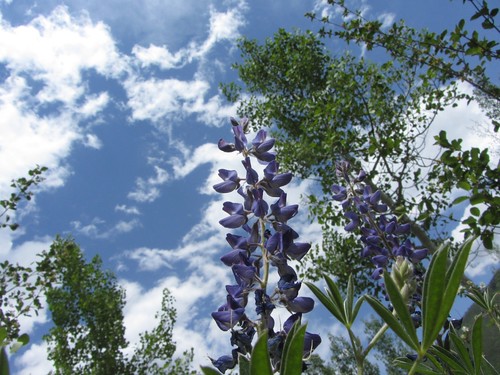 |
| Flowers and aspen trees growing in the Ute Cemetery |
Wednesday, June 12, 2013
Aspen Center for Physics
Tuesday, June 11, 2013
Above Maroon Lake
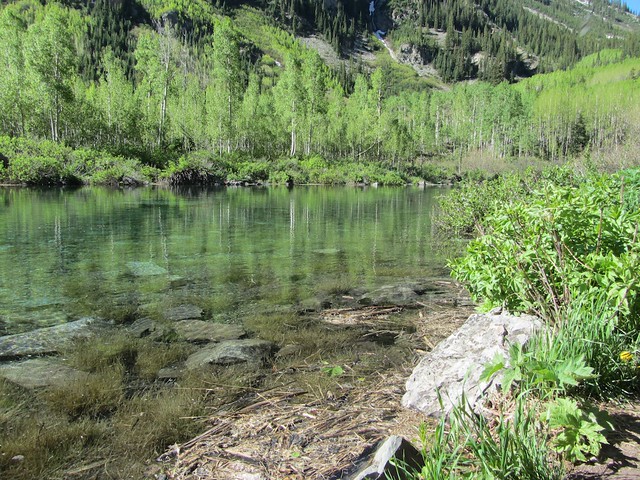 |
| Look carefully: in this photo the rocks are all underwater! |
We started earlier than usual, though a couple hours after the sun rose. So the light was stunning.
Some flowers and lichens:
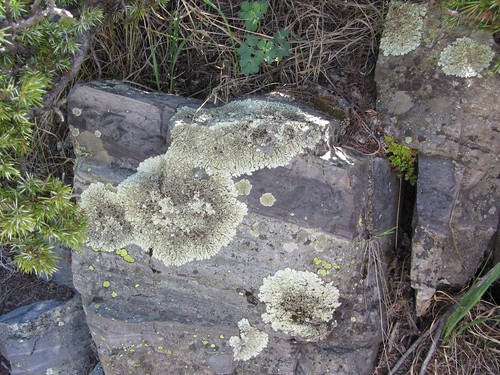 |
| Perhaps the prettiest lichens I've seen |
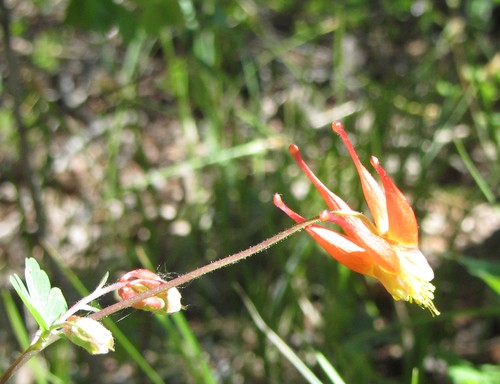 |
| Of course I don't know the name of this flower. But there are lots of them blooming in the woods. |
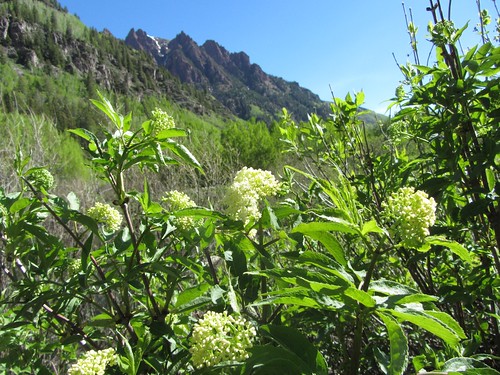 |
| Don't know this one's name either |
 |
| Or this, though it looks like a violet. |
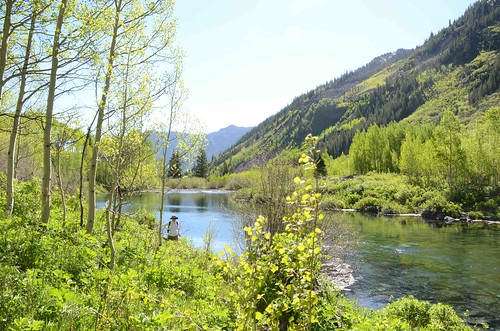 |
| Len's photo of me by the water |
The John Denver Memorial Garden
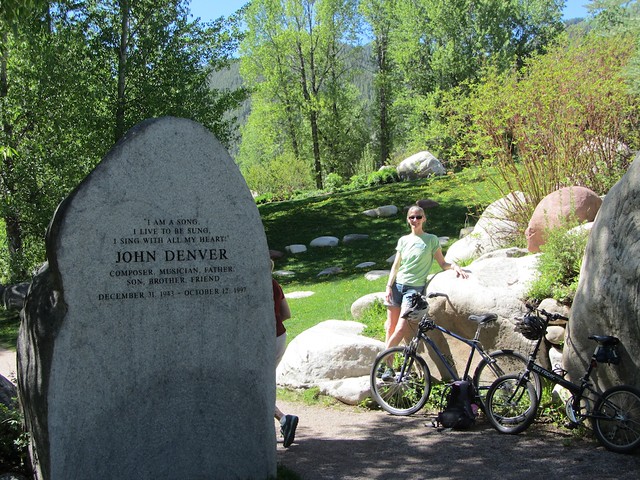 |
| My cycling buddy Maria at the Denver Memorial |
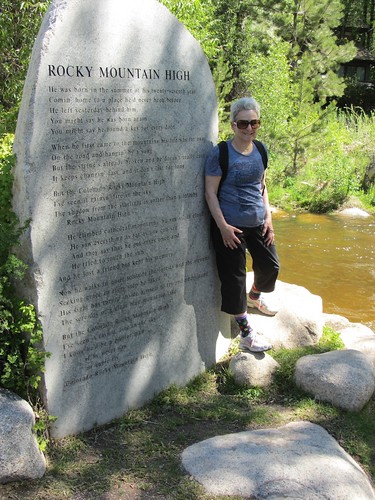 |
| "Rocky Mountain High" |
 |
| "Perhaps Love" |
 |
| Flowers in the garden |
Sunday, June 09, 2013
The Dancing Fountain
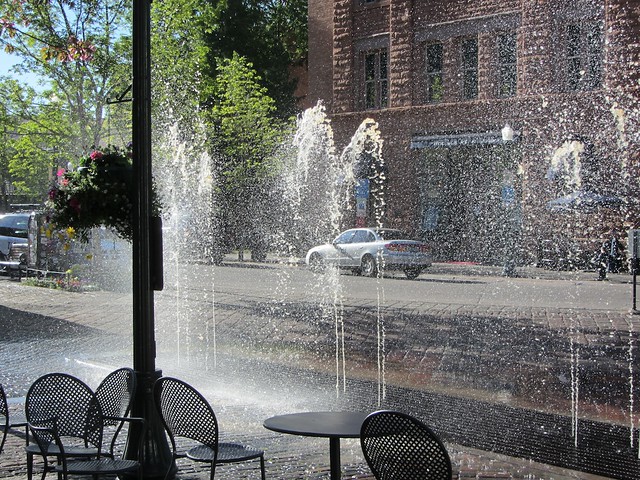 |
| Aspen's Dancing Fountain |
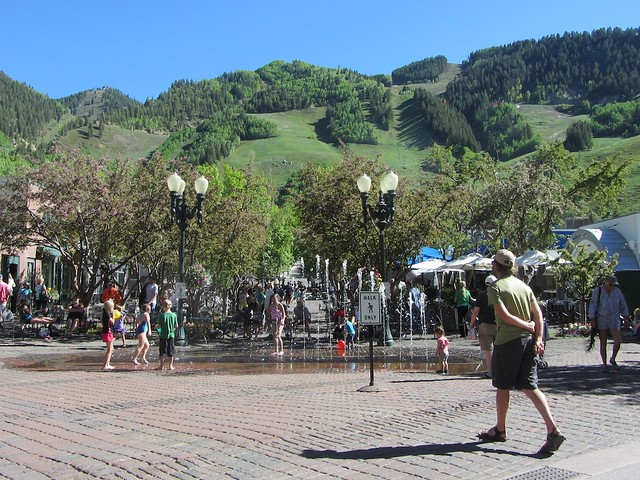 |
| The Dancing Fountain on Sunday afternoon |
On past trips, I've enjoyed the fountain, but by chance this year the Aspen Sojourner magazine, a promotional glossy distributed to tourists, offered some added information about the fountain and its designers: an article titled "Water Logged: How a computer crash almost stopped the music for Aspen's dancing fountain."
Nick DeWolf was an engineer, computer specialist, and successful entrepreneur who retired to Aspen in the early 1970s. In the late 70s, along with sculptor Travis Fulton and engineer Peter Hutter, he developed the idea for the fountain, writing software to control its random motion while they designed and built other features of the fountain. (You can see a pictorial history of their efforts here at a Flickr set of photos about Nick DeWolf. Or read his obit here.)
According to "Water Logged," this critical software was almost lost -- and with it, the key to the fountain's dance. For one thing, the code was written for a now very obsolete computer in assembly language. And DeWolf had said that "its secret commands would die with him."
DeWolf died in 2006. By then he had changed his mind and in fact backed up the software. However, in 2009, all the computers that had the backups crashed, "taking the machine-specific code that conducted DeWolf's aquatic symphony with them."
A programmer named Roger Hollingsworth Jr. was found working as an operator of an earth-mover on a construction site, according to the article. Hollingsworth was able to disassemble and rewrite the original program to run on modern equipment, ensuring that Aspen's delightful fountain would keep dancing, using its "complex randomizer" to keep generating 15-minute cycles of motion that won't repeat for "hundreds of thousands of years."
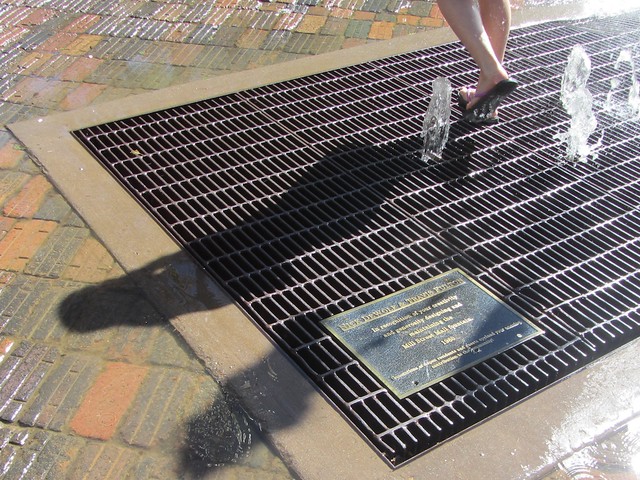 |
| "Nick DeWolf and Travis Fulton: In recognition of your creativity and generosity designing and maintaining the Mill Street Mall Fountain 1980" |
Children love to run through the fountain when it's hot out -- here are a couple more photos I took on a previous trip to Aspen, fun things that can now keep happening for centuries, it seems:
 |
| The fountain in June, 2011, during one of my earlier visits. |
Sorry, but mythology is mythology, and most of us would rather think the secret of the fountain is in only one computer code that came down from Aspen Mountain in 1978.
UPDATE, June 10: This morning's New York Times has an article on the underlying question that's in play here: "When Artworks Crash: Restorers Face Digital Test." The question: "when a Web-based work becomes technologically obsolete, does updated software simply restore it? Or is the piece fundamentally changed?" Though not web-based, the fountain presented the same sort of problem, and the owners chose to keep the software as close to original as they could.
Saturday, June 08, 2013
Up the Hunter Creek Trail
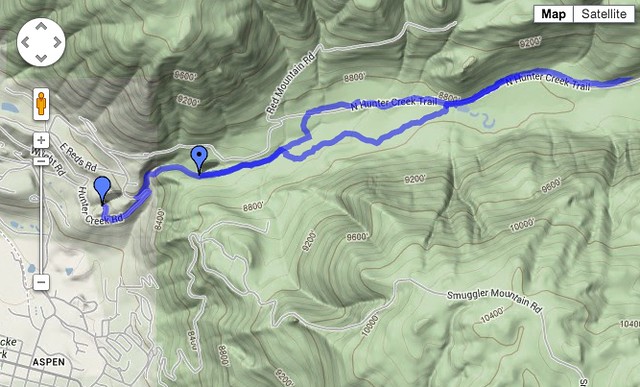 |
| Our approximately 6 mile hike from 10 AM to 3 PM today along the Hunter Creek Trail |
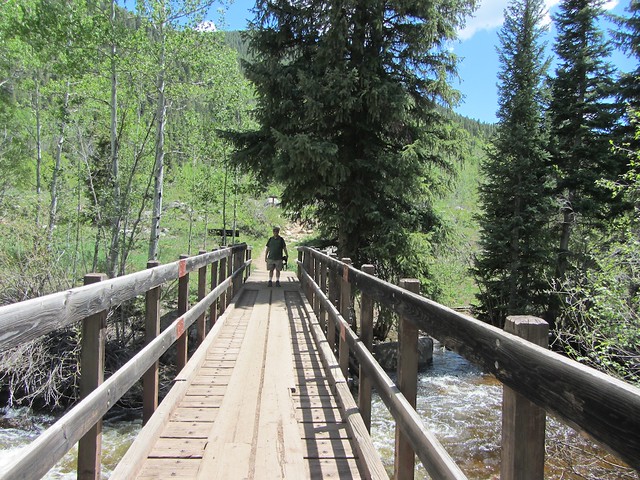 |
| Several bridges cross Hunter Creek. This is the 10th Mountain Bridge, named for the 10th Mountain Division of ski troops that trained here during World War II |
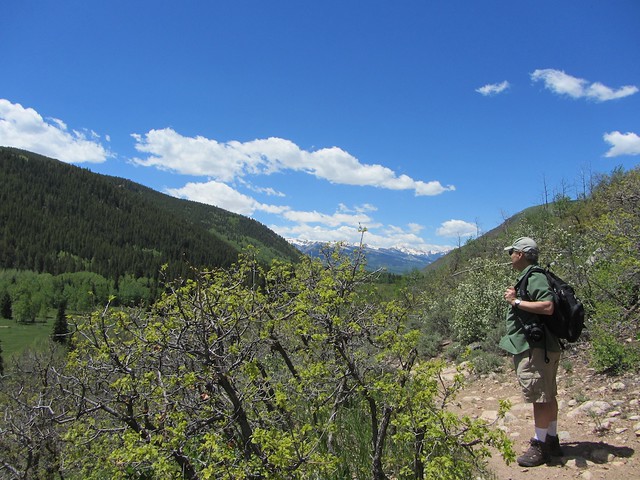 |
| Snow-capped mountains are visible at both ends of the valley. |
 |
| Of course we stopped for lunch: just past a series of beaver dams on the creek |
Friday, June 07, 2013
Short Bike Ride
Subscribe to:
Comments (Atom)
